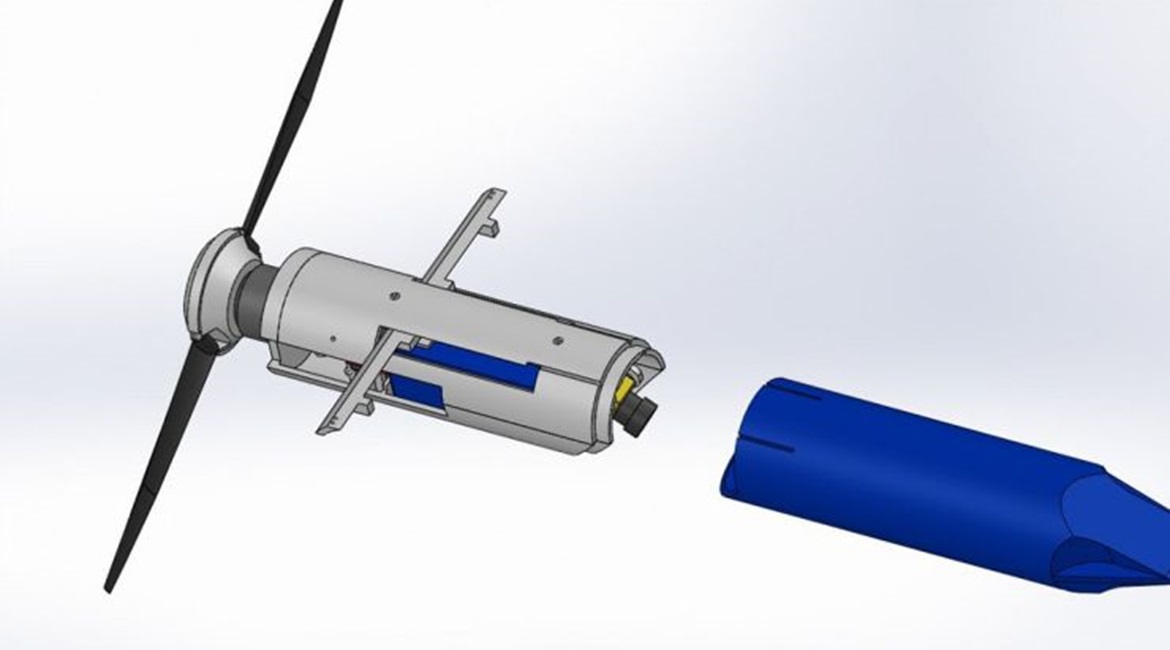
The US Army Combat Capabilities Development Command’s (CCDC’s) Army Research Laboratory (ARL) revealed details of its Grenade Launched Unmanned Aerial System (GLUAS) concept in late April.
The GLUAS is designed to be launched like a projectile using a standard 40 mm grenade launcher to gather intelligence, surveillance, and reconnaissance (ISR) data.

A computer rendering of the US Army’s GLUAS.
The ARL said in a statement that it had filed a patent application for the design in March and expects to start development and testing later this year.
The laboratory also noted that it will develop two GLUAS variants: a paragliding system with folding blade propellers and Mylar paragliding wings, and helicopter-style that hovers on a gimbaling set of coaxial rotors.
The battery powered GLUAS is enclosed within a projectile casing when in the towed configuration. Once launched, it will be able to achieve an altitude of up to 2,000 ft (609 m), with a range and endurance of 2 km and 90 minutes respectively.
The system comprises a cased UAS that is launched by a propellent. The UAS then separates from its casing once the desired altitude is attained. The UAS extends its wings and parachute and travels at an operator-defined airspeed.
A typical UAS comprises a payload, aerodynamic lifting surfaces (wings and parachute), battery, electric motor, and foldable propellers. Typical mission payloads carried by the UAS are camera and sensors such as accelerometer, gyroscope, and magnetometer for ISR purposes.
The UAS can be remotely operated via a handheld controller or using preprogramed navigational waypoints.
Its equipment fit can also include a GPS receiver and a microprocessor and CPU-based flight controller that supports the audio or visual communication to one or more operators through a ground-control system (GCS).
Looking to read the full article?
Gain unlimited access to Janes news and more...